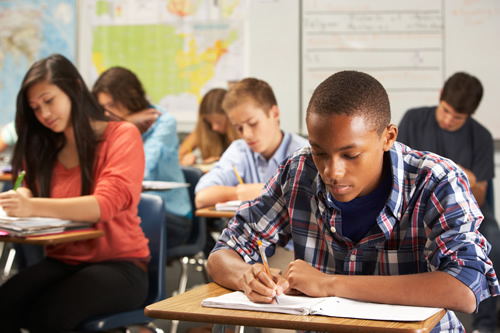In today’s interconnected world, student communities play an essential function in shaping academic and personal experiences.
These areas are not just collections of individuals however are dynamic ecological communities that foster growth, learning, and cooperation amongst trainees. They differ widely in kind and feature, edtech platform from campus-based groups to international on the internet forums, each offering unique possibilities for involvement and development.
Whether you are stepping onto a college campus for the very first time or participating in online understanding environments, comprehending the framework and advantages of pupil neighborhoods can considerably improve your educational journey. This article looks into the essence of student communities, checking out just how they work, the advantages they offer, and the ways in which they can be leveraged for personal and academic success.
Understanding Pupil Neighborhoods
Student neighborhoods are fundamental to the scholastic experience, functioning as both social and instructional support group. At their core, these areas are groups formed naturally by students that share common rate of interests, goals, or fields of study. They can be informal, such as study hall, or official, like pupil unions and clubs.
These areas are identified by a common identity and the collective quest of knowledge, abilities, and experiences. They serve as platforms for trainees to connect, work together, and contribute to each other’s development, prolonging past academic boundaries to influence individual development and community involvement.

Basically, pupil communities are microcosms of bigger social structures, where leadership abilities are honed, concepts are traded, and long-lasting friendships are developed. The interactions within these communities show a varied mix of cultural, intellectual, and social dynamics.
- Networking Opportunities: Pupil neighborhoods supply a network of peers and advisors who can supply assistance and assistance.
- Skill Advancement: Taking part in neighborhood tasks aids trainees establish essential abilities such as communication, management, and team effort.
- Resource Gain access to: These neighborhoods usually give accessibility to scholastic resources, including research study materials and professional guidance.
- Social Involvement: They offer a platform for social interaction, relieving the transition into new academic settings and helping to combat isolation.
Via these various features, trainee communities end up being essential to the all natural growth of students, laying a structure for future specialist and individual success.
The Benefits of Taking Part In Trainee Areas
The advantages of taking part in student neighborhoods are complex, impacting both academic and individual spheres.

On a scholastic level, these areas motivate collective discovering, allowing pupils to gain from varied viewpoints and expertise. Sharing understanding and resources within a neighborhood can lead to extra efficient knowing end results and improved academic performance.
Furthermore, pupil neighborhoods offer a platform for individual development and self-discovery. By engaging with peers from various backgrounds and self-controls, pupils get a more comprehensive worldview, boosting their cultural competence and empathy. This exposure to diverse point of views is vital in developing essential reasoning and analytic abilities.
Furthermore, energetic participation in community tasks can boost students‘ confidence and self-worth. Taking on management roles or participating in discussions and events promotes a sense of success and belonging, which is important for total well-being and motivation.
Types of Student Neighborhoods
Pupil communities come in numerous types, each dealing with different interests and objectives. These can be broadly classified into scholastic, social, leisure, and professional communities, among others. Each type supplies unique platforms and opportunities for trainee interaction.
- Academic Communities: These are typically focused around particular fields or scholastic interests. Instances include study hall, honors societies, and departmental clubs.
- Cultural Areas: These groups concentrate on promoting social awareness and variety, commonly organizing events and activities to commemorate numerous practices.
- Recreational Neighborhoods: These consist of sports teams, entertainment clubs, and hobby-based teams that offer a break from academic roughness and advertise physical and mental health.
- Professional Areas: These are aimed at career advancement, providing networking opportunities, workshops, and mentorship programs to prepare trainees for the professional globe.
By identifying and engaging with the best neighborhoods, pupils can tailor their university experiences to straighten with their rate of interests and career ambitions, paving the way for a fulfilling academic journey.
Constructing a Thriving Student Community
Producing and keeping a prospering trainee area needs initiative and cooperation from both students and universities. It begins with promoting an inclusive environment where all pupils really feel welcomed and valued regardless of their backgrounds.
Establishments can support this by supplying sources and facilities that encourage communication and participation. This consists of creating physical areas like pupil unions and on the internet systems that help with communication and cooperation. Furthermore, arranging occasions, workshops, and workshops can further improve involvement, providing students with possibilities to connect and learn from each other.
Management and Student Participation
Reliable leadership is essential in supporting a successful trainee neighborhood. Leadership functions within these areas use trainees an opportunity to develop and demonstrate their organizational and social abilities. Students that presume these functions add considerably to establishing the tone and instructions of their communities, influencing their peers positively.
Urging leadership and energetic participation amongst trainees What goal of the constitution was also a goal of the Magna Carta? not just strengthens the neighborhood yet additionally empowers individuals, preparing them for future difficulties. By promoting a society of collaboration and support, student communities can thrive, leaving an enduring effect on their members and the scholastic atmosphere overall.
